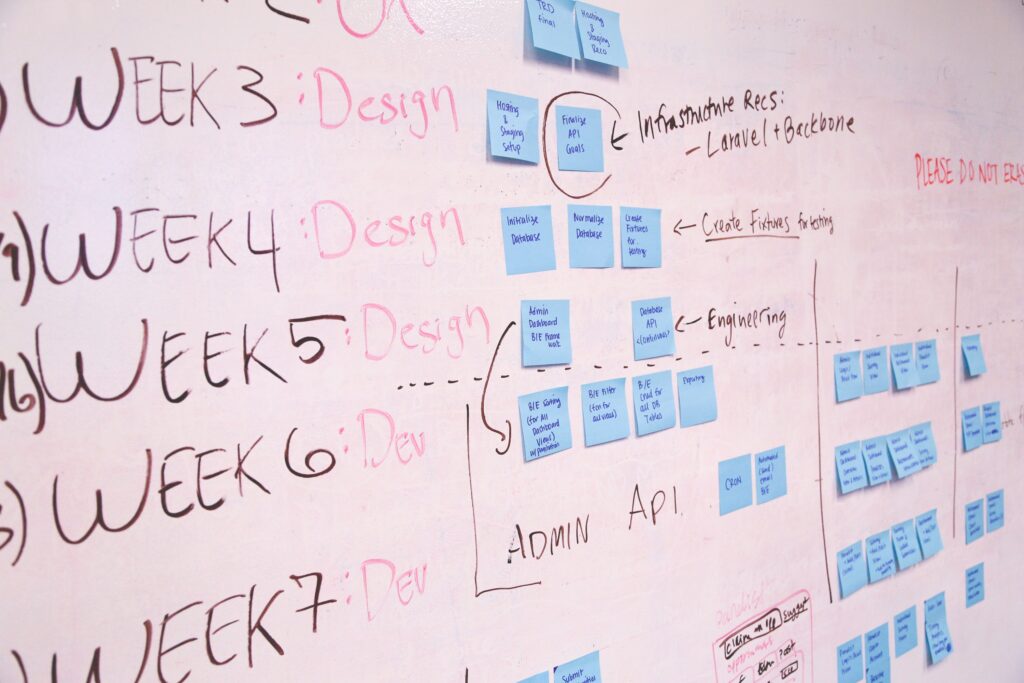Kanban project management involves the process of using a Kanban board to define, track and complete a project. The approach you take as a project manager or product owner to manage a deliverable can vary widely team to team or project to project. As a result, the project management tool you use to track the project can vary. When using Kanban project management, typically you are more focused on the deliverable and moving the project forward in small iterations to deliver. This typically works best with an agile team environment. If you are working with a team that expects a waterfall deliverable, then typically Kanban is not the right tool for you to use.
What is the difference between Agile and Waterfall?
With a waterfall method to project management, teams work on a single project from start to finish. This typically involves a single deliverable at the end of the project which is delivered after many phases of a project. The phases of a project can include requirements, design, development, testing and delivering. Agile however takes a larger project and breaks it into smaller chunks of works that are then delivered iteratively as they get completed. Therefore, the project management tools you use to track the effort are different and the expectations and toolsets the team uses can vary. Kanban boards work really well to track the tasks you expect to complete within a given sprint or iteration of a project. They are designed to focus on the tasks and deliverable for short iterations.

Typically, a Kanban project management solution will be more fluid to allow for pivots and changes to scope as the project executes. Waterfall meanwhile tends to be more rigid and have controls in place to allow for changes but requiring a more structured approach to change management.
Kanban Project Management Tips To Help Get Started
If you are working on your first agile project and looking to setup your next iteration or sprint, here are some tips to help you get going.
- Create tasks that can be completed in very small durations. Typically, teams doing agile will complete 2-week sprints. You want to breakdown your tasks for the project to work efforts that can be started and completed in that 2-week sprint.
- If you have a larger task, create an epic. At times you may have a task that can go longer than the 2-week sprint. In this case, create an epic which is a parent task and from that parent you can create many smaller children tasks. These children tasks should be able to be completed within a 2-week sprint. Once all of your children are complete, the parent epic task is also completed.
- Within Agile and when using a Kanban board, teams typically have daily stands or meetings to review what is being worked on that day and to make sure everyone has what they need to move forward. Unlike waterfall which does weekly status meetings, agile focuses on the small 2-week iterations and ensuring nothing blocks the work each 2 weeks with a lot of communication.
- Add a grooming session. When you start a project, you will create all of the tasks it will take to complete the work. To figure out which tasks you plan to complete in the next 2 weeks however is typically done during a grooming session. During this session, the teams review all of the tasks in the backlog and prioritize work that they should do first and can get done in the next 2 weeks. You should plan a grooming session every other week so you can define the next sprint before the current one finishes.
- Learn velocity. As time goes on you will learn about yourself and your team what amount of work, they can complete in any given 2 weeks. Use that learning to define your team’s velocity. As a result, you will get better at forecasting and grooming.
Kanban project management allows teams to use the agile approach to delivery. The focus is on small iterations and ensuring you deliver early and often. This will avoid longer projects that the final product may miss the end date or not be the final product you were hoping for. With this approach, you can make constant course corrections to what you are doing as you are seeing results throughout the process. Often, teams do not see what may have gone wrong until testing which in waterfall happens after all of the development was completed. This causes costly and time-consuming corrections.
Pingback: The importance of a Kanban Board in Agile - Kanban Board Online